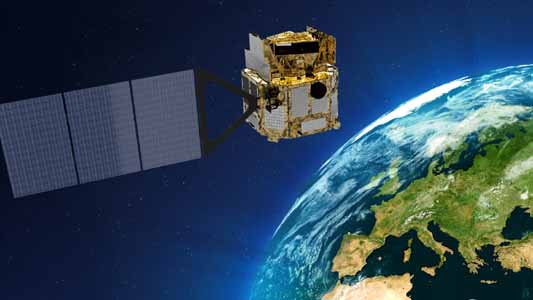Rome – The Italian Space Agency (ASI) and Thales Alenia Space have signed a contract for the implementation of NASA’s Surface Biology and Geology – Thermal Infrared (SBG-TIR) Earth Observation mission.
The signing of the contract is the result of an agreement signed in 2023 between ASI and NASA for the Surface Biology and Geology – Thermal Infrared mission, marking a significant step in the historic collaboration between the two agencies and demonstrating the value of international synergy in addressing global challenges.
Among the main objectives, the mission aims to provide radiometric and multispectral measurements of terrestrial and aquatic emissions for climate, ecological, and geological analyses, and to support practical applications such as food security and water management.
The thermal infrared (TIR) radiometer, provided by NASA, and the VIS-NIR camera provided by ASI will work together to ensure high-quality observations, enabling the investigation of terrestrial and marine ecosystems, monitoring of water resources, and phenomena related to high temperatures such as wildfires and volcanic eruptions.
The mission: who does what?
Thanks to its consolidated technical expertise and proven experience in Earth Observation missions, Thales Alenia Space will be responsible for the integration of the SBG – TIR satellite, adapting the PRIMA-S platform to host a spectrometer in the Thermal InfraRed (TIR) field and carrying out the necessary tests to ensure the success of the mission.
The SBG – TIR satellite will also host the VIREO instrument, designed by Leonardo with the Italian Space Agency (ASI) and which will acquire context images in the visible spectrum and in the near- infrared spectrum (VNIR).
The PRIMA-S platform, derived from the HE-R1000 (High Efficiency Radar) solution, is part of Thales Alenia Space’s Earth observation product lines, which, in turn, includes both radar and optical satellites.
“The signing of this contract,” according to Teodoro Valente, President of the Italian Space Agency, “represents a very important milestone in bilateral cooperation with NASA and demonstrates our shared commitment to Earth observation and to the development of space technologies addressing global challenges related to climate change and environmental monitoring. By integrating the
capabilities of our COSMO-SkyMed and PRISMA satellites with new thermal infrared observations, we will be able to provide a clearer and more detailed picture of the state of our planet, contributing to building a better future for generations to come.”
‘’We are very proud to have signed this contract and our gratitude goes to the Italian Space Agency that I wanted to thank sincerely for giving us the opportunity to play a central role in this mission in collaboration with NASA and NASA’s JPL,‘’ said Giampiero Di Paolo, Deputy CEO and Senior Vice President, Observation, Exploration and Navigation at Thales Alenia Space. ‘’This cooperation represents a substantial advantage for Italy to enrich its capabilities and competences in Earth observation, for the benefit of the scientific community as well as for the development of practical applications, thus contributing to a better management of environmental resources and to the understanding of global phenomena. “This contract means a lot to our company from a business perspective as it confirms the flexible concept of the PRIMA-S platform with respect to different types of payloads as well as its use for different classes of Low (LEO) and Middle Earth orbits missions” Di Paolo added.
More specifically, the Italian Space Agency (ASI) will collaborate with NASA on the management of the entire system, payload integration and launch operations. NASA will be responsible for the integration of the entire TIR instrument, which consists of the OTTER sensor, provided by NASA itself, and the Italian VIREO sensor, which will be developed by Leonardo.














